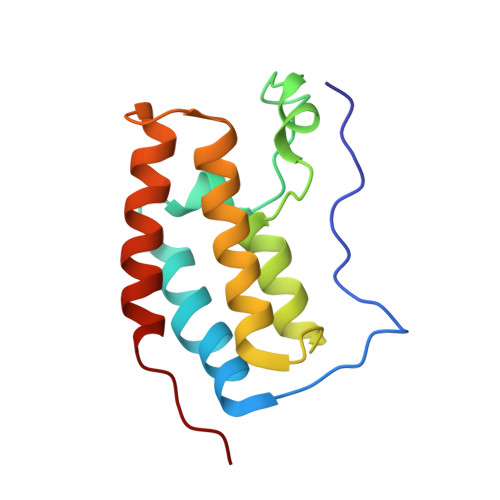Rational design of 5-((1H-imidazol-1-yl)methyl)quinolin-8-ol derivatives as novel bromodomain-containing protein 4 inhibitors
Xing, J., Zhang, R., Jiang, X., Hu, T., Wang, X., Qiao, G., Wang, J., Yang, F., Luo, X., Chen, K., Shen, J., Luo, C., Jiang, H., Zheng, M.(2018) Eur J Med Chem 163: 281-294
- PubMed: 30529546
- DOI: https://doi.org/10.1016/j.ejmech.2018.11.018
- Primary Citation of Related Structures:
6AFR - PubMed Abstract:
Bromodomain-containing protein 4 (BRD4), an epigenetic reader of acetyl lysine, has emerged as a promising therapeutic target for many diseases including cancer, inflammation and heart failure. Our previous study reported that nitroxoline, an FDA approved antibiotic, showed potential BRD4 inhibitory activity and antiproliferation activity against leukemia cell lines. In this study, we further explored the structure-activity relationship (SAR) around nitroxoline and employed our previously developed machine learning based activity scoring function BRD4LGR for further analysis. To improve the cellular level activity, physico-chemical properties were optimized using computational approaches. Then the candidates were tested for their ADME/T profiles. Finally, based on this rational hit-to-lead optimization strategy, 3 drug-like BRD4 inhibitors were obtained, with different profiles on cell line selectivity for multiple myeloma, leukemia and triple negative breast cancer. Further mechanism study showed these compounds could down-regulate c-Myc to inhibit cancer cell growth. This work illustrates the application of multiple computer-aided drug design techniques in a hit-to-lead optimization scenario, and provides novel potent BRD4 inhibitors with different phenotype propensities for future cancer treatment.
Organizational Affiliation:
Drug Discovery and Design Center, State Key Laboratory of Drug Research, Shanghai Institute of Materia Medica, Chinese Academy of Sciences, 555 Zuchongzhi Road, Shanghai, 201203, China; University of Chinese Academy of Sciences, 19 Yuquan Road, Beijing, 100049, China.















